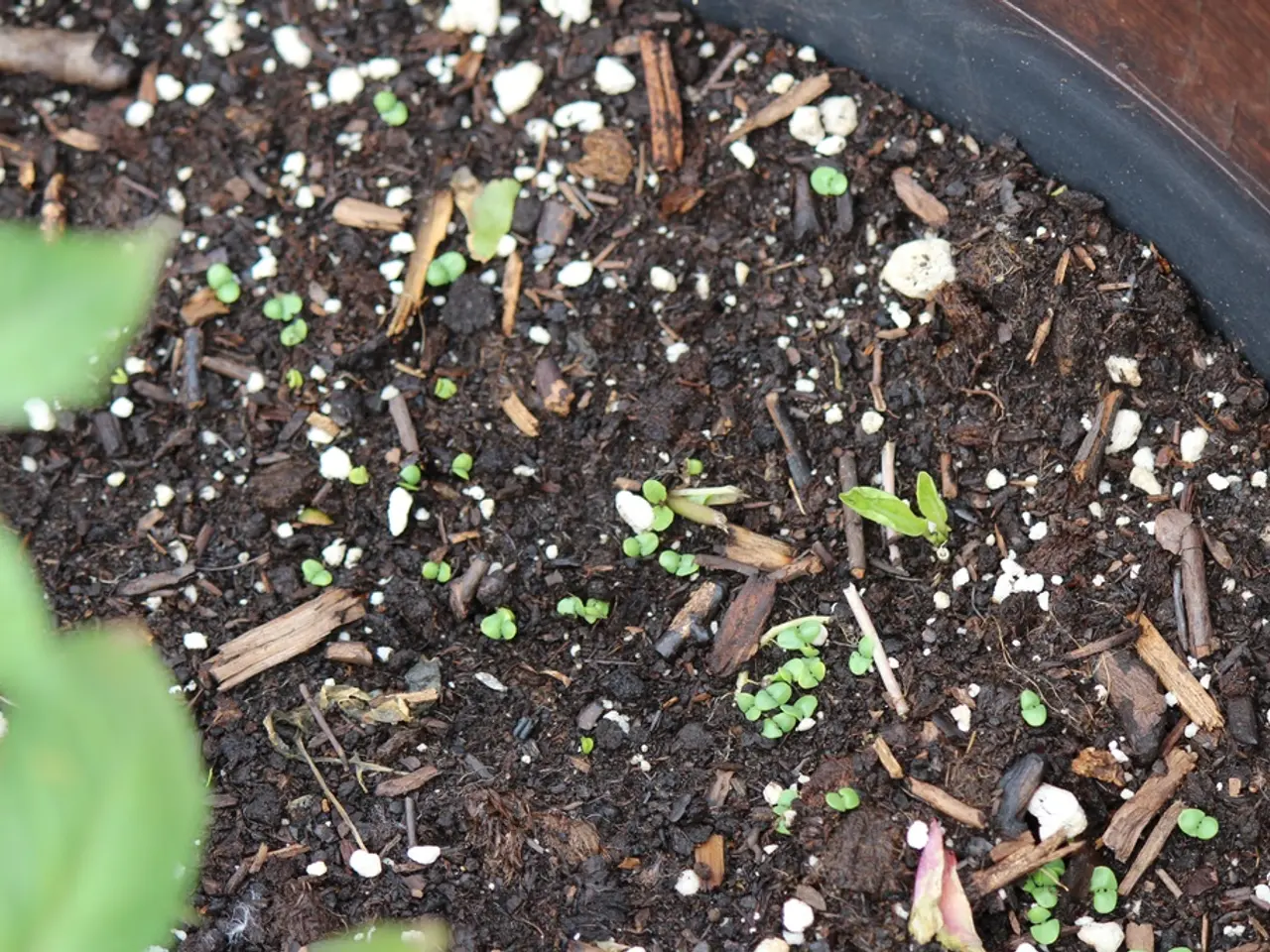Soil-Dwellers in Plant Roots: Identity Revealed
Root mealybugs are tiny, sap-sucking insects that infest the roots of plants, often going unnoticed due to their subterranean dwelling. These pests, covered in a waxy white cottony substance, can cause significant damage to plants, leading to stunted growth, yellowing leaves, wilting, and overall decline in vigor.
Root mealybugs feed on plant root sap, depleting essential nutrients and weakening the plant. In addition, they excrete honeydew, which can encourage sooty mold growth, further impairing photosynthesis and stressing the plant. The damage to roots also reduces nutrient and water uptake, potentially causing leaf drop and fruit drop in fruit-bearing plants.
Fungus gnats, on the other hand, are small, black, flying insects that resemble tiny mosquitoes. They are drawn to moist soil and humid conditions, often infesting indoor or greenhouse plants. Fungus gnats are attracted to light, heat, and scent, and are commonly found hovering or crawling over plants.
Dealing with Root Mealybugs
Prompt detection and combined physical, chemical, and cultural strategies provide the best control to safeguard plant health.
- Isolation and Hygiene: Immediately isolate infested plants to prevent spreading the pests to others. Wash hands and tools after handling infected plants to avoid cross-contamination.
- Physical Controls: For smaller infestations, carefully remove affected parts of the root system. Scrape off visible mealybugs from roots using gentle tools. Application of a strong water stream to dislodge mealybugs on foliage can also be effective.
- Chemical and Organic Treatments: Dabbing mealybugs directly with 70% rubbing alcohol kills them on contact and is effective for small infestations. Use insecticidal soaps, horticultural oils, or neem oil to coat roots and soil surfaces to suffocate and repel mealybugs. Zinc sulfate application has shown benefit as a foliar spray or soil treatment, partially strengthening plants against damage.
- Preventive Measures: Regularly inspect plants, especially root zones, for early detection. Maintain soil health and good drainage, which can reduce favorable conditions for root mealybugs. Avoid overwatering, as excessive moisture can encourage infestation.
It's important to note that solarizing soil is generally ineffective against root mealybugs because of their protection in root zones and soil depth.
Fungus gnat larvae are legless, transparent grubs with unique shiny blackheads. Female root mealybugs lay eggs in fluffy, white nests, and the eggs hatch into tiny nymphs that are highly mobile and can easily spread to other plants.
In the fight against these pests, knowledge is power. By understanding the habits and impacts of root mealybugs and fungus gnats, gardeners can implement effective strategies to protect their plants and maintain healthy, vibrant indoor and greenhouse ecosystems.
- To maintain a healthy lifestyle for your plants, implement preventive measures such as regularly inspecting them, especially the root zones, for early detection of root mealybugs and their eggs.
- In addition to maintaining an overall home-and-garden environment, consider gardening techniques that promote good drainage and soil health to create conditions less favorable for root mealybug infestations.








